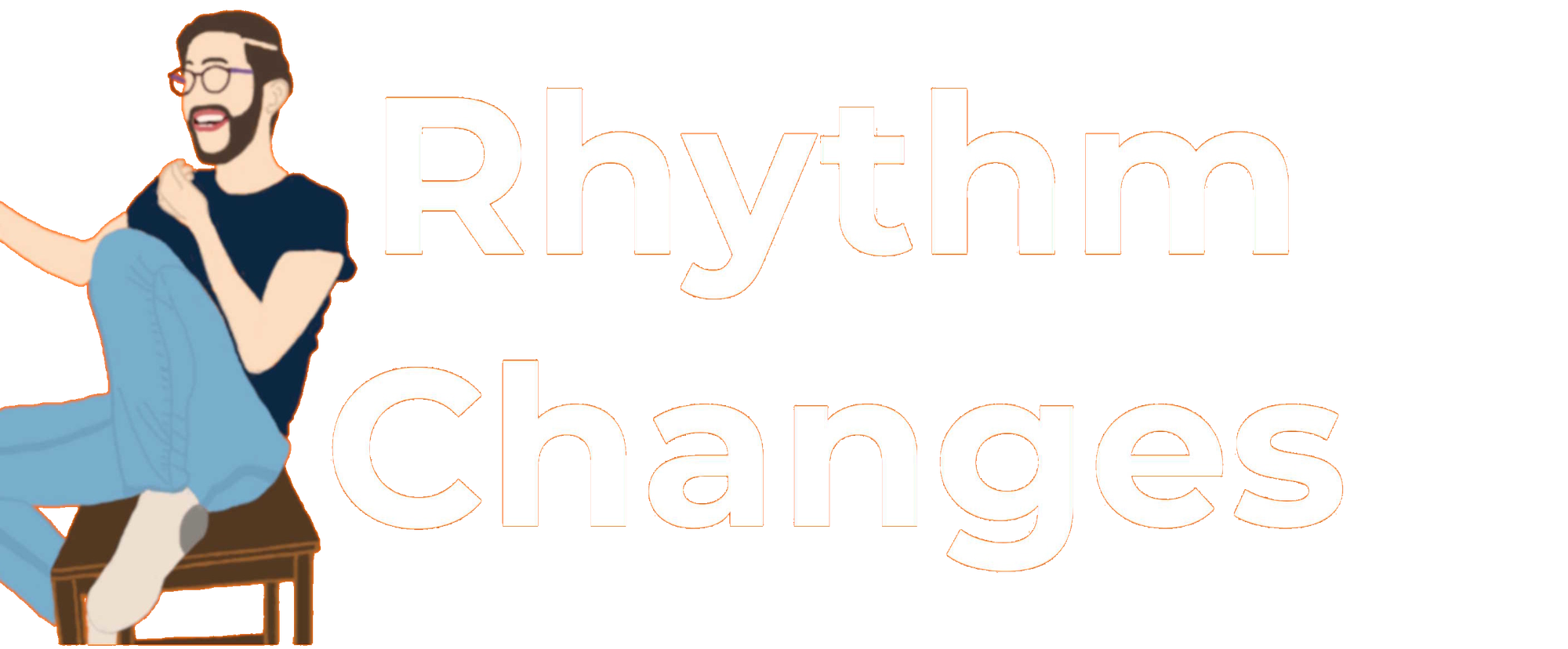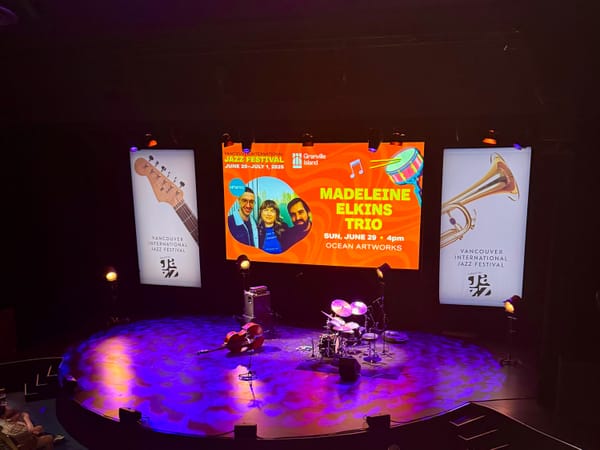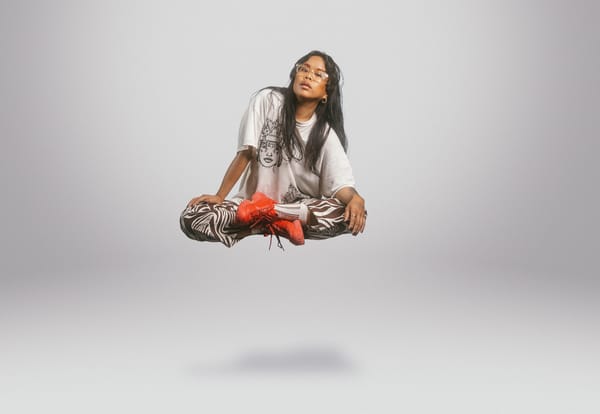Kevin "Kid" Romain makes weight at All-City debut
Or: How I learned to stop worrying and love the melody (Album release, Salience Network)
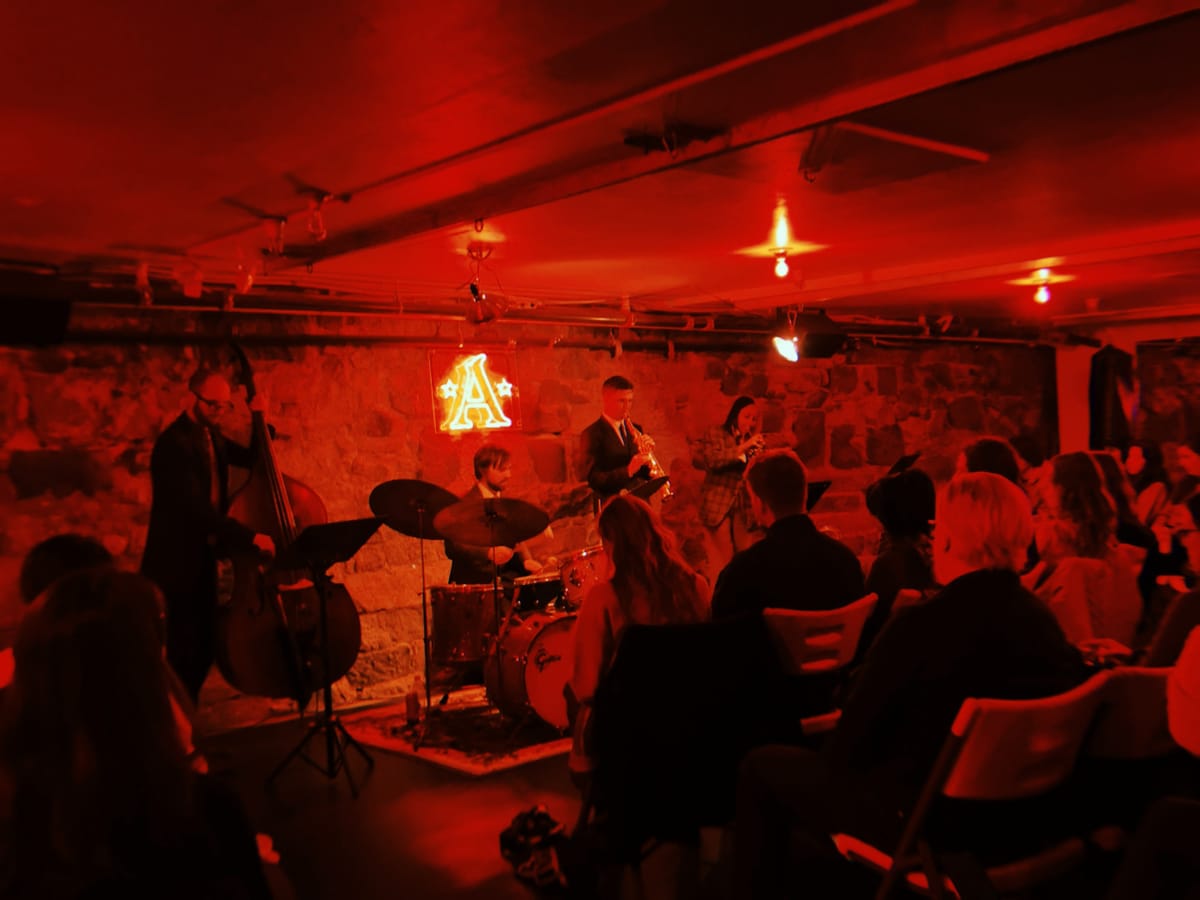
Kevin Romain is a ubiquitous name in Vancouver’s jazz / creative / improvised music scene. I’ve always found him to be this sort of immovable, ever-present figure since he’s usually either playing, watching, or simply hanging around most of the musical happenings in the city.
I’ve been fortunate enough to play with Kevin a number of times over the years. I appreciate him a great deal as a musician because he’s perfectly comfortable driving the rhythm in the settings of straight-ahead, avant-garde, or contemporary-post bop. All are situations in which we’ve played together.
To put it in a perhaps grossly broad way, Kevin Romain is a modern jazz drummer. And as he and I have discussed on several occasions over so many mid-rehearsal coffees – that Kevin roasts and brews himself, mind you – much of the inspiration for our favourite jazz music from the last 50-plus years which one might call modern inevitably leads back to one source: Miles Davis’ second great Quintet.
The great trumpeter that he was, Miles’ greatness came from the fact that he was equally great as a creative director and as a talent scout. At the height of his fame and influence, he gathered the four most exciting young musicians in the world at the time in Wayne Shorter, Herbie Hancock, Ron Carter, and Tony Williams to build what would become the Large Hadron Collider of music; smashing old standards and new cutting-edge rhythmic concepts together to hypothetically unveil some new fundamental particles. The concept of time, no changes was their Higgs Boson.
To me, what exemplifies the sound that they developed over this period is an uninterrupted interplay between melody and percussion. Even with Herbie’s unrivaled harmonic imagination at their disposal, chords would take a back seat in this style. When you listen to tracks like “Agitation” from E.S.P. or “The Sorcerer” from Sorcerer, Herbie uses chords in a purely decorative way, like an orchestrator adding a short motif in the low brass to elevate the oboe melody.
Whenever the time would come for Herbie’s solo, he'd play almost entirely melodically, almost like the third horn more than a piano. As a sacred keeper of this special new sound, Herbie knew what to do to avoid upsetting it (or upsetting Miles).
It’s a cold evening in late November. I turn the corner into the alley off Cambie Street just across from Victory Square and find the friendly face of Vancouver darling Teresa Marie leading me to the unassuming entrance to All-City Athletics, the Vancouver boxing gym that would be hosting the debut album release show for Kevin Romain’s Salience Network.
I couldn’t help but be reminded of the former space known as 1067: the less-than-legal but nevertheless storied venue that hosted weekly mind-blowing free improvised shows during my early years in the jazz scene. Both venues have subtle entrances from a back alley into a flat, wide listening room with minimal, dramatic lighting.
I arrived a bit early to the boxing gym, dimly lit with two red neon signs that read “All-City” and a white spotlight for the band. The mood is set. But for me, what really sold the dreaminess of this show was the fabulous image of the whole group – regular members Kevin, John Nicholson, Jeff Gammon, and guest Feven Kidane – dressed to the nines in suits and ties. A powerful look to say the least, and incidentally, the same dress code as a certain great quintet. What are the odds?
After a while, the room fills up and we are off to the races. I think the combination of relatively low ceilings, an audience of 60-70 people, and the de facto sound baffling provided by about a half-dozen punching bags makes the room sound quite crisp and balanced. “Well, this is encouraging,” the drummer remarks to the crowd.
The entire show is played in album order, and the first three tunes “Mixolydian Theme”, “Ear of the Snake”, and “Dream Groove”, while all very different compositions, show off Romain’s superb ability to write a catchy groove. The bass ostinato in “Dream Groove” in particular being of the variety that continues playing in your head long after the band has moved on from it.
“Burr Geometry”, a song inspired by Romain’s passion for caffeine, is aptly named being an uptempo exercise in alternating time signatures and asymmetrical phrasing. Closing out this set, “For Jackson” is a sweet waltz that sounds the most like it could be a jazz standard in the vein of “Pee Wee”, another cut off of Sorcerer.
Now, I don’t want to pigeon-hole Kevin here by making constant comparisons to the Second Great Quintet. In fact, during his banter, Romain makes separate references to Eric Dolphy, anthropologist Margaret Mead, and an Instagram account for a featherless cockatiel as sources of inspiration.
Kevin is candid when it comes to explaining the purpose of his compositions. Sometimes they’re meant to tell a story, like in “Golden Champion”, a song about the car that brought him from Vancouver to Banff and back. “Go East” is an acerbic observation of the phenomenon of local musicians heading to NYC or Toronto in search of greener pastures. “Low Solar Angle” is simply meant to share the serene feeling of seeing the sun rise at dawn.
If you know Kevin, you know that he has a strong streak of political activism about him. He often stays abreast of the news locally and globally, and he shares his views on social media with no punches pulled. He even named his coffee brand General Strike.
The second-to-last tune “How Can I Keep Singing?” is a song about being sad, the title a play on the American folk-hymn “How Can I Keep From Singing?” To paraphrase Kevin, it’s an expression of overwhelming sadness and hopelessness as a reaction to the cruelty and unfairness of our everyday reality. He dedicated this performance of it to Palestine. These strong and complicated emotions are captured succinctly in the composition, where it conveys that particular variety of exhausted negativity that depression is.
But it’s the group’s performance that achieves the cynical mania that comes when trying to remove oneself out of self-preservation in order to observe the absurdity of it all. In the end, all the darkness and despair bursts out into a prolonged cathartic roar. What makes “How Can I Keep Singing?” profound is that it answers its own question by being played in the first place. The answer is to keep singing, because sometimes that’s all you can do. When the abyss stares back, whip out your axe.
Now, I have to admit something here. I may have a conflict of interest in reviewing this show. As it happens, I’ve played this music before. In fact, I actually performed all of these compositions with Kevin, Jeff and John about half a year ago to promote the jazzfest, a week before it started. I was an enjoyer of Kevin’s music already and was ecstatic to play it with the Salience boys then.
While I did certainly have a blast playing with them back then, part of me felt a bit left out after this album release show. Of course, this had nothing to do with how the band treated me; it was truly good vibes all around. It wasn’t even about how I performed technically. I didn’t exactly know what was bothering me, so I let it go and eventually forgot about it.
Flash forward to now, and I’ve experienced all of this music again from the other side of the bandstand. After some thought, I realized there are two aspects to what I felt had been missing when I played.
First, in my attempt to learn Kevin’s music, I believe I had focused more on nailing the changes and laying down a lush harmonic backdrop to the tunes, i.e. lots of chords. In retrospect and with our friend Herbie Hancock in mind, I feel the approach of acting as an auxiliary horn would have served the spirit of the music more effectively.
Feven did this marvelously at the show. She wasn’t just a second horn though, she was the second horn. Her improvisations are extruded in long, flowing ideas that the rest of the band can dip in and out of in their own ways. It was an ear-opening experience. But how is it that her playing blends so nicely with this band? Is it as simple as just playing long tones and slower melodies? The answer is obviously no, and that brings us to the second aspect of what I had realized about my own approach to this music.
In my quest to do right by Kevin’s writing by being harmonically correct and being too concerned with my ability to play the form of the music, I was trying to be logical and rational towards a style of music that often demands you abandon all rationality and logic. How are you supposed to respond rationally to a tune whose message is a literal paradox? Don’t try to answer that question, by the way.
Ultimately, Kevin’s music is about emotion. Whether it stems from a personal story, a relationship, or some universal experience, each tune starts from a strong emotion of some type. From there, the tune either serves as a vessel to communicate and elevate the emotion, or alternatively to obliterate it and forge a new deeper emotion from the glowing-hot chunks of the original. It was a privilege to see this music be performed before me and I’m excited that if I may play Kevin’s music again, I’ll have a shiny new perspective to try out.
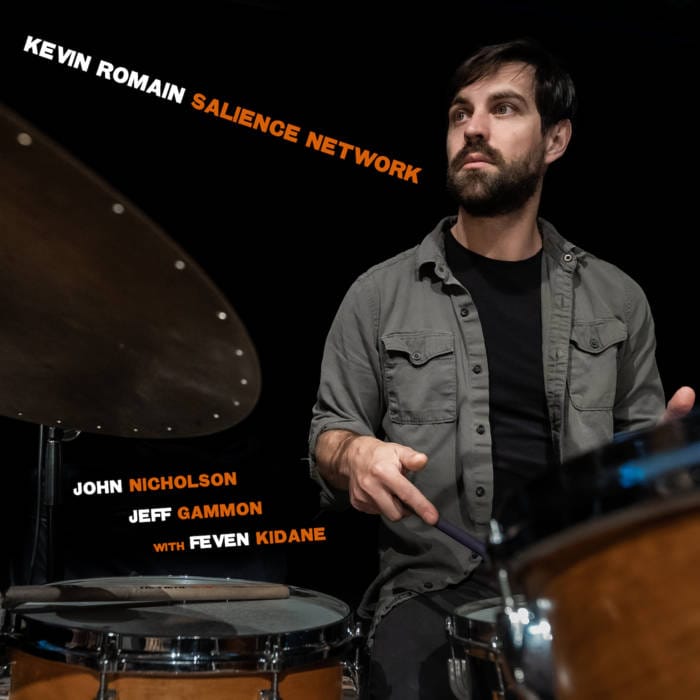
Salience Network: Fireball; Ear Of The Snake; Dream Groove; Burr Geometry; For Jackson ; Low Solar Angle; Go East; Golden Champion; How Can I Keep Singing?; Friendly Neighbourhood Cat. (1:02:48)
Personnel: Kevin Romain on drums; Jeff Gammon on bass; John Nicholson on saxophones; Feven Kidane on trumpet.
